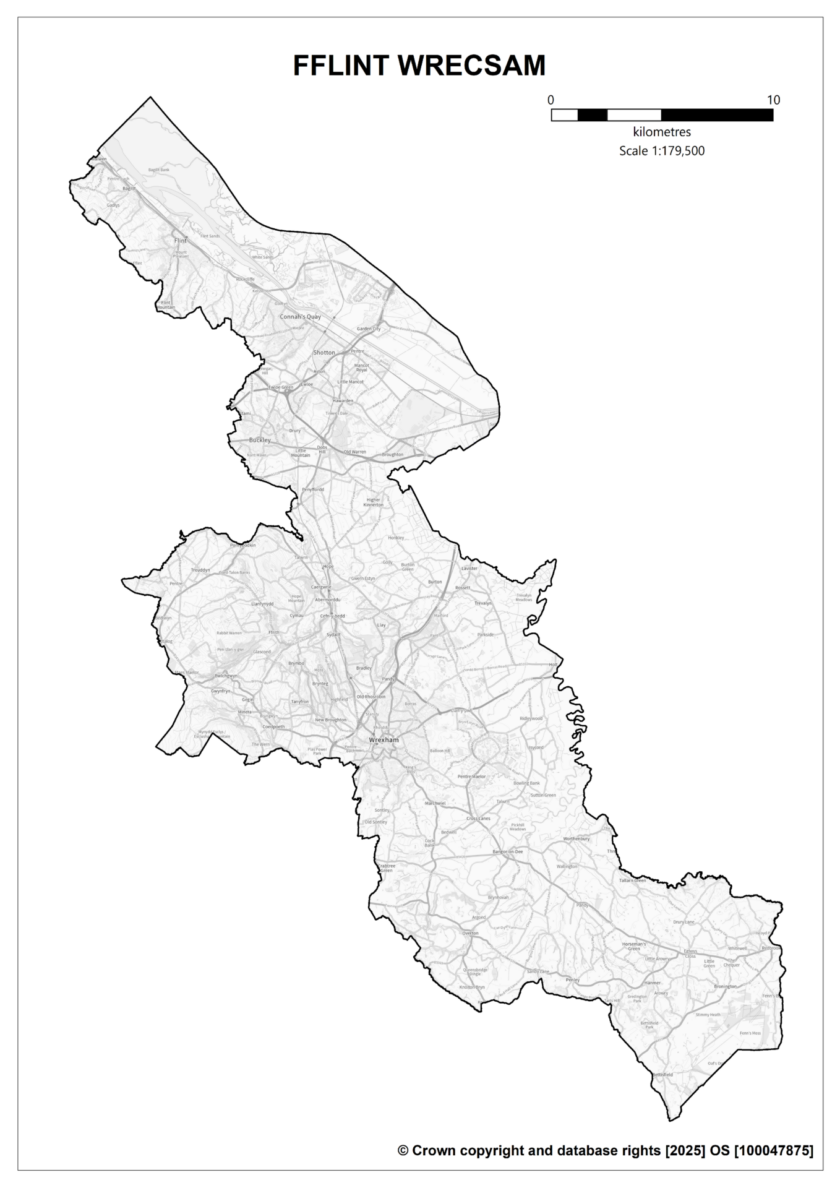New ‘Fflint Wrecsam’ Senedd constituency confirmed

Flintshire’s Alyn and Deeside constituency will merge with Wrexham to form Fflint Wrecsam, one of 16 new Senedd seats confirmed in the final boundary review.
The Democracy and Boundary Commission Cymru has completed its review, required under the Senedd Cymru (Members and Elections) Act 2024.
The number of Senedd constituencies is being reduced from 40 to 16, with each seat covering a larger area and electing six members, increasing the total number of Senedd members from 60 to 96.
The changes will take effect at the next Senedd election in May 2026, marking the biggest overhaul of Welsh electoral boundaries in decades.
New boundaries and public feedback
The Fflint Wrecsam seat will be formed by pairing the current Alyn and Deeside and Wrexham parliamentary constituencies.
The decision to merge the two areas proved controversial, with six formal representations made about the proposal—five in opposition and only one in support.
Alternative suggestions included linking Alyn and Deeside with Clwyd East or pairing Wrexham with Montgomeryshire and Glyndŵr to keep the entire city of Wrexham in one constituency.

However, the Commission ruled these options out due to the constraints of the boundary review process and the need to ensure geographical continuity with other newly formed constituencies.
The name Fflint Wrecsam also faced mixed reactions. Of the ten representations received, eight opposed the name, with suggestions including Flintshire East and Wrexham, Wrexham Dyfrdwy, or simply Alyn or Wrexham. Despite this, the Commission determined that Fflint Wrecsam best reflected the local authorities within the constituency and would be recognisable to residents.
The Welsh Language Commissioner supported the decision.
Shereen Williams, chief executive of the Democracy and Boundary Commission Cymru, said:
“The changes we’ve had to make have been very significant.
“The debate over proposed pairs and names has been robust, but very constructive, and the constituencies recommended by the Commission have been significantly strengthened due to the public’s involvement in the process.”
New electoral system
The changes also mean that Wales will abandon the traditional first-past-the-post voting system.
Instead, a fully proportional system will be introduced, using the D’Hondt mathematical formula to allocate seats.
Voters will not select individual candidates but will instead vote for political parties, which will put forward pre-ordered lists of candidates.
The effective threshold to get elected is expected to be around 12% of the vote.
While these boundary changes are now final, a full boundary review—the first in nearly two decades—will take place after the 2026 election, meaning the map could change again by 2030.
What it means for Flintshire and Wrexham
For voters in Flintshire and Wrexham, this means that instead of having separate Senedd representatives for Alyn and Deeside and Wrexham, they will now be part of a larger Fflint Wrecsam constituency, electing six members under the new proportional system.
With the changes now confirmed, residents across both areas will go into the next Senedd election under a vastly different political landscape, with both new constituencies and a new way of voting.
Spotted something? Got a story? Email: [email protected]
Latest News
